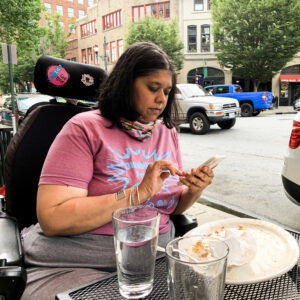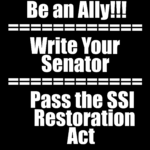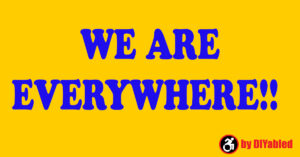



Tell Your Congress People to Pass
HCBS Access Act &
SSI Reformation Act !!!!
Find you Senators and Congressperson here
https://www.house.gov/
Learn more about the HCBS Access Act
Here
Learn more about the SSI Restoration Act
&
Find you Senators and Congressperson here
Here
Or txt “SIGN PSLOAE” to 50409

Learn how you an help disabled people get more equity in your communities.
Read more about SSI Restoration Act here!!
Disabled people want pride by being able to live above the federal poverty level, have more than $2000/mo in money and assets without being penalized, have the equity to be documented as being married.
=====================
If you aren’t on SSI or don’t know anyone who receives SSI you might have no idea how dysfunctional this program is.
======================
The SSI Restoration Act will…
– Raise the benefit rate to match 100% of the Federal Poverty Level each year
(distributions currently put recipients well below the FPL, as they equal less than 75% of the FPL)
– Increase the SSI couple’s benefit to be double the individual benefit
(couples both on SSI receive less together than they would separately [$794/individual vs. $1,191/couple])
– Earned income up to $416/month will not reduce benefits
(currently, earned income above $65/month results in a reduction of benefits – not updated since 1972)
– Raise the asset limit to $10,000 for individuals and $20,000 for couples
(individuals can currently only keep $2,000 in assets/savings ($3,000 for couples) – not updated since 1989)
=======================
[Image Description: On a black background in white letters on top it says “Be an Ally!!!” Underneath that it says “Write Your Senator” Underneath that it says “Pass the SSI Restoration Act”]
https://callurreps.carrd.co/
Or txt “SIGN PSLOAE” to 50409

LGBTQ Pride month has begun. We are so happy the rights LGBTQ community have gotten and will continue to be allies to them as they fight for more rights. Allies are important when minorities are fighting for an equal space at the “table”
DIYabled is working on a video project for Disability Pride month, July. Disability is the largest minority in the world and we want to make a video that symbolizes this and asking the disabled community to take part. There are some new bills and acts going to congress this year and it is very important that we let our communities and the people we put in office know that We Are Everywhere!!
=======================
Directions to participate in the project.
People should video themselves however they can. The quantity of people we get to participate is more important than the quality of the video.
We would like to get submissions by the end of June to get it out by the first week of July but will accept submissions for a year to share at next year’s Disability Pride month. The more disabled people we get the more of an impact WE will make.
===================
INSTRUCTIONS
-say your name
-describe your identity, (i.e. I am a white Woman have glasses blue eyes wearing a blue shirt.
-you can identify your pronouns too if you want. Whatever you want to say about yourself is great
-This is the most important part. We would like everyone to end it with I am disabled. we are everywhere.
Please send the clips to DIYabledGo@gmail.com